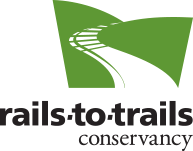
It's Time for a Shared-Use Path Across the Bay Bridge |
|


Right now, car-free options to travel across the Bay Bridge are limited as a result of reduced public-transit schedules and the absence of any route across the bridge for biking, walking and people-powered mobility. A shared-use path on the Bay Bridge will provide a socially distanced, affordable and traffic-free transportation option for people traveling between Alameda and San Francisco counties. The path can be built for less than two days' worth of BART’s annual budget and will take only two to three months to build with available funding, according to an independent engineering analysis. Show your support for a shared-use path on the Bay Bridge. People traveling between Oakland and San Francisco do not currently have a safe and affordable transportation option. Public transit is running less frequently, and while the Bay Area's public transit operators have implemented additional cleaning protocols, commuters remain hesitant to travel by bus or train. This is putting increased strain on car-centric transportation facilities, which has the potential to have a significant impact on the region’s traffic problem while making it increasingly difficult for people without a vehicle to cross the bay. The introduction of the Metropolitan Transportation Commission’s (MTC's) new Quick-Strike Program creates a funding solution for a shared-use path on the Bay Bridge during a time when demand for new transportation options as well as spaces to walk, bike and be active outside is high. The Bay Area’s transportation decision-makers have the potential to quickly deliver a pathway across the Bay that prioritizes people. MTC, Caltrans, the Alameda County Transportation Commission and the San Francisco County Transportation Authority can take action today and deliver a shared-use path in a matter of months—fulfilling a long-held active-transportation vision for the region. The shared-use path will only be successful if it prioritizes the needs of low-wage workers, Communities of Color, people with disabilities and those living in outer East Bay communities, all of whom have been disproportionately affected by the pandemic’s health and economic impacts. The development of the shared-use path must include a community-driven outreach process, with local advocates and organizers engaged as decision-makers to ensure that the project addresses these communities' needs. The shared-use path can be funded through the new Quick-Strike Program and will help accomplish critical regional and statewide goals, including:
The Bay Area is facing a transportation crisis. We need a protected shared-use path installed on the San Francisco-Oakland Bay Bridge IMMEDIATELY to provide a safe and environmentally friendly way for people to cross the Bay during and after the COVID-19 pandemic. New York City committed to a similar project on two of its most iconic bridges. Let’s send a message to our local leaders that the Bay Area can, too. |
Sign the PetitionSign this petition to the region’s transportation leaders and spread the word. NOW is the time to make the vision of a shared-use path on the Bay Bridge a reality. To: Right now, there is an unprecedented opportunity to create safe and environmentally friendly access for people to cross the Bay during and after the COVID-19 pandemic. Currently, car-free options to travel across the Bay Bridge are limited as a result of reduced public-transit operations and the absence of any routes for biking, walking and people-powered mobility. A shared-use path on the Bay Bridge will provide a socially distanced, affordable and traffic-free transportation option for travelers between Alameda and San Francisco counties. The path can be built for less than two days' worth of BART’s annual budget and will take only two to three months to build with available funding, according to an independent engineering analysis. It can be funded through the new Metropolitan Transportation Commission (MTC) Quick-Strike Program and will deliver on long-standing transportation goals in the region including:
MTC, Caltrans, Alameda County Transportation Commission and San Francisco County Transportation Authority need to act quickly to implement a shared-use path on the Bay Bridge, in partnership with outer East Bay communities as well as low-wage workers, Communities of Color and people with disabilities across the region who have been disproportionately affected by the COVID-19 pandemic and may be seeking alternate transportation routes across the Bay. Want to sign on your organization to this petition? |
